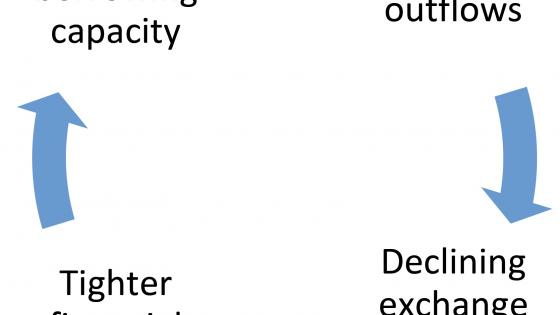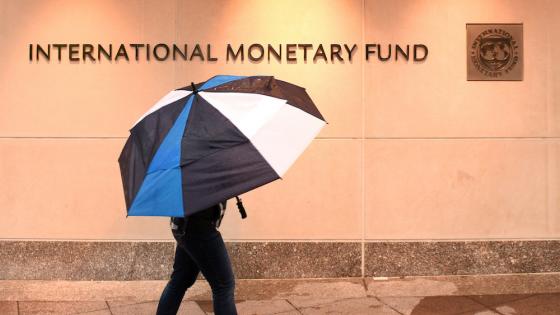Systemic events are intrinsically difficult to anticipate, though once they have occurred it is easier to look back and agree that a disruption was, in fact, systemic. Because of the severity and reach of the current crisis, renewed attention on what constitutes a systemic crisis and whether it can be uncovered, early or even concurrently, has come to the fore. The task of identifying warnings of impending systemic crises has become increasingly complex as global financial markets have become highly integrated and hence systemic shocks can cross national borders.
Policymakers want to know when problems in financial institutions, and markets more broadly, are likely to become “systemic.” Being able to identify systemic events at an early stage enhances policymakers’ ability to take necessary (and perhaps exceptional) steps to contain the crisis. Similarly, being able to detect when those pressures may be easing would help to determine when to initiate exit strategies. Given that there are many facets and causes of systemic risks, the third chapter of the IMF’s recent Global Financial Stability Report present a range of measures to discern when events become systemic. Other recent influential work on systemic risk includes Acharya and Richardson (2009) and Brunnermeier et al (2009).
Methodologies and key findings
Firstly, the chapter reviews the basic information typically used to identify a financial institution’s vulnerability. These standard “financial soundness indicators” are examined to see if they could identify which financial institutions proved vulnerable in the current crisis. For the sample of global financial institutions examined, leverage ratios and return on assets proved the most reliable indicators, while risk-weighted capital-asset ratios and non-performing loan data lacked predictive power. In the current crisis, key vulnerabilities went unanticipated due to off-balance sheet exposures and lenders’ dependence on wholesale funding. Indeed, many “failed” institutions still met regulatory minimum capital requirements. While financial soundness indicators can still be helpful in assessing individual vulnerabilities when reliable market data may not be available – particularly in less developed financial markets – they should be complemented by other measures and systemic stress tests and broadened to better capture off-balance sheet exposures and liquidity mismatches.
Secondly, several techniques also analyse (high-frequency) forward-looking market data for groups of financial institutions in order to detect whether and when systemic risks became apparent. Starting from a simple correlation and cluster analysis, market-based measures are then calculated to capture joint tail risks – the risk that multiple financial institutions become distressed simultaneously – which seem to have given prior indications of impending stress for the overall financial system. Specifically, some of the more advanced tools examined include:
- Contingent Claims Analysis (CCA): This approach explicitly accounts for the inherent uncertainty in the value of assets, and links the market value of equity, assets, and debt in an integrated way. This approach permits the estimation of asset values and asset volatility (that are otherwise not directly observable), which are used to provide an equity market-based assessment of default risk (see Gray and Malone, 2008).
- The option-implied probability of default (option iPoD): This approaches uses equity option prices to infer default probabilities on individual financial institutions, with the advantage that determining when the institution goes into default (the default barrier) is also derived within the model in line with the observation that the value of debt moves with market conditions (see Capuano, 2008).
- Multivariate Dependence and Equity Options: Equity option information is used to calculate tail-risk indicators for individual institutions as well as between institutions. These tail risks encompass both the skewness and the kurtosis and thus adjust to stressful conditions (see Gray and Jobst, 2009).
- Joint of probability of defaults, distress dependence and cascade effects: Based on credit default swap prices, joint probabilities of distress and then a matrix of (pairwise) distress dependencies are estimated. The probability of cascade effects whereby the distress of a particular financial institution affects another is also calculated (see Segoviano, 2006; Segoviano and Goodhart, 2009). Regime-switching techniques are then employed to examine the different states of the multivariate stability indicators (see Hesse and Segoviano, 2009).
Thirdly, proxies for “market conditions,” such as variables used to measure investors’ risk appetite, that influence (and reflect) the risks facing financial institutions are also examined to capture the bigger picture of system-wide stress (see González-Hermosillo, 2008). The signalling capacity of these indicators is explored by observing whether and when they move from low, to medium, and to high volatility “states,” with the high state associated with systemic crisis (see González-Hermosillo and Hesse, 2009, and summarised on Vox).
Several measures suggest that letting Lehman Brothers collapse on 15 September 2008 aggravated what appeared to be a global systemic financial crisis already in the making. The various techniques used in the chapter clearly identify major stress events, such as those associated with the assisted merger of Bear Stearns and JPMorgan in March 2008, as well as the failure of Lehman Brothers a few months later, as systemic. Some indicators, as early as February 2007, also signalled rising systemic pressures. However, advance notice of systemic stress using market-based data can be relatively brief at times.
Policy implications and conclusion
The analysis presented could help calibrate the marginal contribution of a financial institution to systemic risk conditional on the state of global markets (as reflected in, for example, the level of global liquidity and interest rates, the degree of volatility and uncertainty in capital markets, and the general price of risk). The tools presented in the chapter could be useful to financial regulators as the basis for additional regulatory measures to encourage behaviour that mitigates systemic risk. In particular, macro-prudential regulation should aim to require institutions to enhance their stress tests and hold additional capital to take account of the build-up of systemic risk and their contribution to it.
Since the practical utility of measures to identify systemic risk depends on their ability to reliably predict stress events, which may only become apparent concurrently in some cases, policymakers should monitor a wide range of market indicators tuned to systemic risk and combine these indicators with more thorough information from financial institutions.
More public information on key data, especially on off-balance derivative exposures and measures of market liquidity, is needed.
Due to the difficulties in predicting systemic events, policy makers should develop comprehensive contingency plans that can be implemented quickly if needed. Having such a scheme in place may help diminish uncertainty, which is often a key factor in the transition of a “contained” financial crisis to one that is systemic.
Note: The views expressed in this article are those of the authors and should not be attributed to the IMF, its Executive Board, or its management. Any errors are the responsibility of the authors.
References
Acharya, Viral and Matthew Richardson (eds). Restoring Financial Stability: How to Repair a Failed System, Wiley, March 2009.
Brunnermeier, Markus, Andrew Crockett, Charles Goodhart, Avi Persaud, and Hyun Shin, 2009, “The Fundamental Principles of Financial Regulation,” Geneva Reports on the World Economy 11.
Capuano Christian, 2008. “The option-iPoD. The Probability of Default Implied by Option Prices Based on Entropy,” IMF Working Paper 08/194 (Washington: International Monetary Fund).
González-Hermosillo, Brenda (2008), “Investors’ Risk Appetite and Global Financial Market Conditions,” IMF Working Paper 08/85 (Washington: International Monetary Fund).
González-Hermosillo, Brenda and Heiko Hesse, 2009 (forthcoming), “Global Market Conditions and Systemic Risk,” IMF Working Paper (Washington: International Monetary Fund).
Gray, Dale F. and S. Malone, 2008, Macrofinancial Risk Analysis, by Dale F. Gray and Samuel Malone, John Wiley & Sons.
Gray, Dale and Jobst, Andreas A., 2009 (forthcoming), “Tail Dependence Measures of Systemic Risk Using Equity Options Data – Implications for Financial Stability,” IMF Working Paper (Washington: International Monetary Fund).
Hesse, Heiko and Miguel Segoviano, 2009 (forthcoming), “Distress Dependence, Tail Risk and Regime Changes,” IMF Working Paper (Washington: International Monetary Fund).
International Monetary Fund, 2009, Global Financial Stability Report, Spring 2009 (Washington: International Monetary Fund).
Segoviano, Miguel, 2006, “The Consistent Information Multivariate Density Optimizing Methodology,” Financial Markets Group, London School of Economics, Discussion Paper 557.
Segoviano, Miguel and Charles Goodhart, 2009, “Banking Stability Measures”, IMF Working Paper 09/04 (Washington: International Monetary Fund).







